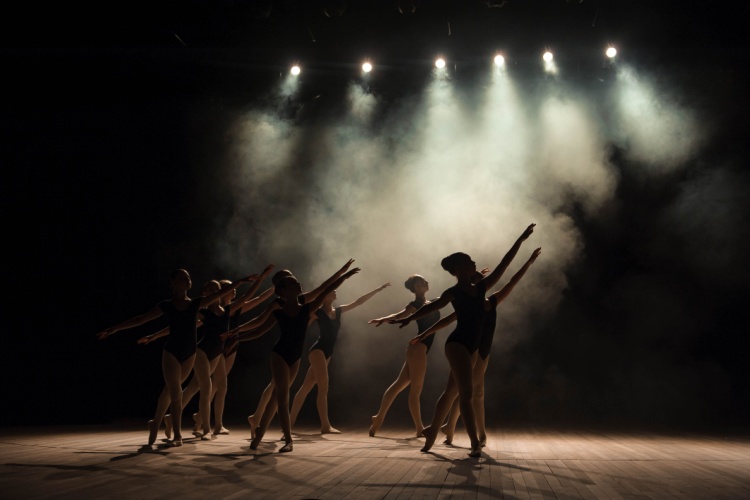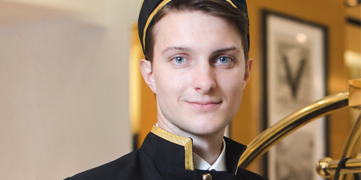Exclusive for May 19th Commemoration of Atatürk, Youth and Sports Day: Development of Ballet in Turkey
Ballet, which manages to touch the human soul by offering an aesthetic visuality, is a type of art that brings different art disciplines together such as dance, music, and theater. The interest in ballet, which came to life during the Renaissance in Italy, increased over time. In this way, ballet became an art form that is accepted worldwide. The encounter of ballet in our country dates back to the 16th century. With the Republic, ballet began to flourish in our lands. Let’s learn more about the development of ballet in Turkey.
The Ottomans’ Meeting with Ballet and the First Performances That Were Held
Turks’ encounter with ballet dates back to 1524. The ballet show, held in Istanbul for the first time during the Ottoman Period, took place in the house of the Venetian ambassador. Turks participated in the show called Dramma Per Musica, organized by the Italians, not only as an audience but also as dancers.
In the years following this first show, dance and mime shows were also included in the circumcision events that were held for the sons of Murat III. and Murat IV. Although these shows were far from the general structure of the ballet shows that we have today, they paved the way for ballet and dance to gain a place in Ottoman entertainment.
The ambassadors sent to Europe during the reigns of Mahmud II. and Abdülmecit described the ballet and opera performances that they watched in their embassy reports, which led to the introduction of both types of art into the palace. Italian musician Giuseppe Donizetti, who was invited to Istanbul during the reign of Mahmud II. to conduct the palace orchestra called Mûsikâ-i Hümâyûn, brought ballet, opera, and operetta examples to the palace. During the reign of Abdülmecit, a group of 90 people was established in the palace called Ehl-i Fenn-ü Ma’rifet Kız Fanfarı ve Bale Heyeti.
From the Palace to the Public: The Transformation of Ballet into a Public Performance Art
The emergence of ballet from the palace and becoming a performing art for the public dates back to the late 19th century. The first ballet event in this context was held in Beyoğlu Theater in 1860. These demonstrations also bear the signature of the groups that were invited from Italy. After this first event at Beyoğlu Theater, the ballet performances spread to different theaters such as Verdi, Tepebaşı, Varyete, Amfi, Concordia and Güllü Agop.
Russian immigrants who escaped from the Red Army and came to Istanbul after the Russian Revolution exhibited successful examples of ballet performances in our country. Russians, who were influential in the entertainment culture of Beyoğlu in the early 1920s, also began to train students in this field.
Ballet in the Republican Era
After the declaration of the Republic, Turkey, which wanted to make progress in art as well as in every field, did not ignore ballet. Ideas about ballet training are received from Lydia Krassa Arzumanova, who gave ballet lessons in Istanbul. Mustafa Kemal Atatürk met with Arzumanova personally.
Arzumanova performed her first show with the students she trained in Turkey on November 8, 1931, at the Casa d’Italia Hall in Tepebaşı. Arzumanova started giving ballet lessons at the Municipal Conservatory and Eminönü Community Center. She performed various ballet shows with her students under the name of Bedii Raks Topluluğu. In 1943, the ballet department was launched at the Istanbul Municipal Conservatory under the leadership of Hungarian artist Olga Nuray Olcay.
Britain’s Influence on Turkish Ballet: Yeşilköy Ballet School

Laying the foundations of the real art of ballet in Turkey began with the launch of Yeşilköy Ballet School. Dame Ninette de Valois, one of the directors of the Royal Ballet and one of the pioneers of contemporary ballet, had a hand in the launching of this school and the flourishing of Turkish Ballet.
Dame Ninette de Valois, who was invited to Turkey by the Ministry of National Education in 1947, examined schools in Ankara and Istanbul for several weeks. During her stay in Istanbul, Dame Ninette de Valois stayed at the Pera Palace Hotel, which is one of the most important architectural buildings of the city and fascinating with its historical atmosphere. Dame Ninette de Valois, who wrote a comprehensive report after her investigations in Istanbul and Ankara, states that it is possible to open a ballet school in Turkey. Thus, on January 6, 1948, Yeşilköy Ballet School was launched with the cooperation of the Government of the Republic of Turkey and the British Council. While preparing the training program of the school, the program of the British Royal Ballet School was taken as an example.
For Yeşilköy Ballet School, a total of 29 children, 11 boys and 18 girls, between the ages of 7-10, were selected by interviewing the parents of the children. Dame Ninette de Valois appoints Joy Newton, one of the founders of the Royal Ballet and Audrey Knight, a graduate of the Royal Dance Academy in London, as teachers at the school.
Yeşilköy Ballet School, which operated for two years, then moved to Ankara and became a department affiliated with the Ankara State Conservatory. Dame Ninette de Valois has directed the ballet department with her team for nearly 20 years. Thus, Dame Ninette de Valois’s name is engraved in history as the Madame of Turkish Ballet.


